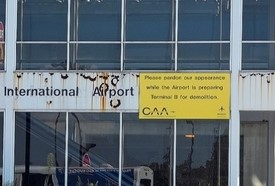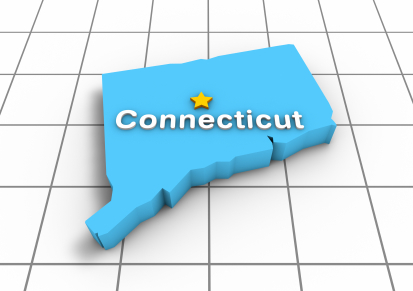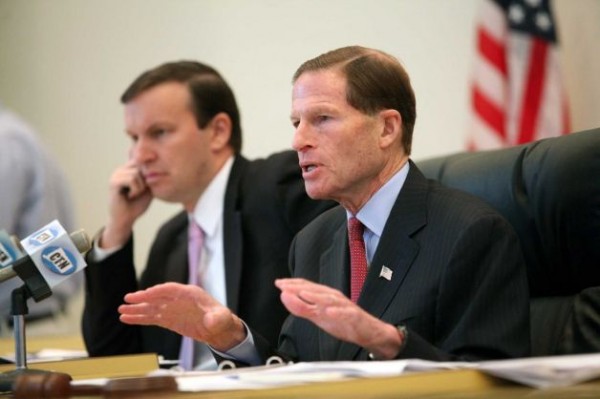Is TV Traffic Reporting in Connecticut For Women Only?
/Three of the women who deliver traffic reports each weekday morning on Connecticut's four network-affiliated television stations have backgrounds in television news reporting, and the fourth has made traffic her specialty on local radio stations as well as television. They are unquestionably hard-working professionals whose reporting is seen, and relied upon, by thousands of commuters each day. They hold jobs, however, that appear to be reserved for women.
Few recall the last time that a man was the regular morning traffic reporter on a local television station in the sate, although men and women serve, or have served as anchors, reporters, sports reporters, and meteorologists. At a time when more attention is being paid to the gender-centered nature of some positions in the workplace, televised traffic reporting in Connecticut remains squarely the domain of women. 
Heidi Voight, the traffic reporter for NBC Connecticut, is a Connecticut native, has television news experience in Springfield, Mass., and is a national spokesperson for the M.I.A. Veterans Recovery Project. The station points out that Voight “has been exposed to nearly every position in the newsroom and has experience reporting, anchoring, shooting video, working on the assignment desk and producing newscasts.” Voight succeeded Kayla James.
Nicole Nalepa came to WFSB from WWLP-TV/22News in Springfield, MA where she anchored the early morning weekday newscast. She also served as the senior weekday morning reporter and early morning show producer in Springfield, and was one of the first live, on-scene reporters from Western Massachusetts during the manhunt for the Boston Marathon bombing suspect. Previously, Nalepa was selected for a post-grad summer internship at CBS News on the "CBS Evening News with Katie Couric." She also interned at WFXT-Fox 25 in Boston. Nalepa succeeded Olessa Stepanova, who moved on to handle traffic chores for Boston's WCVB after three years in Hartford. 
Teresa DuFour has been working in the news and entertainment industry since 2003. The morning traffic reporter for WTNH News 8’s Good Morning Connecticut started off behind the camera, and worked her way up from the assignment desk to the news desk. After DuFour graduated from the University of Connecticut in 2001 with her bachelor’s degree in broadcast journalism, she worked at a number of radio stations across the state. She anchored and reported daily newscasts for KISS 95.7 and Westwood One Radio Network. Between 2004 and 2006, she was a reporter and anchor for KTVE and KARD in New Orleans, covering Hurricane Katrina, among other stories. A native of Middlebury, she had her first child earlier this year, and serves as co-host of the WTNH program Connecticut Style. She succeeded Desiree Fontaine in both roles.
While DuFour was on maternity leave, traffic was reported by Marysol Castro. A New York City native and Wesleyan University graduate, Castro previously was an anchor at WPIX-TV in New York City and weather anchor for the CBS News morning program 'The Early Show.'
Fox CT’s traffic reporter Rachel Lutzker gave birth to her third child earlier this year, is a native New Yorker who first came to Connecticut to attend the University of Hartford. While there she began interning at KISS 95.7 and decided to make a career in media. She is also heard each morning on iHeartMedia Connecticut stations providing up-to-date traffic reports, and doing the same on the drive home each workday on The River 105.9. Rachel’s career has included stops at WCBS New York as traffic reporter, WFSB-TV and now WTIC-TV.
The website payscale.com reports that 59 percent of traffic reporters nationwide are women. When the CBS affiliate in Chicago was seeking a new traffic reporter a few years ago, they held open tryouts among viewers. The winner of the CBS 2 Chicago Traffic Tryouts competition, Derrick Young, was awarded a contract and continues to report the traffic alongside the station's morning news team.
PHOTOS: Nicole Nalepa, Teresa Dufour, Heidi Voight, Rachel Lutzker (credits: station websites)
NOTE: This story will be updated as additional information becomes available.





 In Connecticut there are 4,071 children in foster care, with 74 percent in family placement and 24 percent in non-family placement, exceeding the national average, according to the report. That compares with 84 percent in family placement and 14 percent in non-family placement, nationally. Only Colorado (35%), Rhode Island (28%) and West Virginia and Wyoming (27%), had a higher percentage of foster children than Connecticut in a non-family placement.
In Connecticut there are 4,071 children in foster care, with 74 percent in family placement and 24 percent in non-family placement, exceeding the national average, according to the report. That compares with 84 percent in family placement and 14 percent in non-family placement, nationally. Only Colorado (35%), Rhode Island (28%) and West Virginia and Wyoming (27%), had a higher percentage of foster children than Connecticut in a non-family placement.
 Among the report’s findings across the United States:
Among the report’s findings across the United States:

 locations in the United States to offer Aer Lingus flights to Ireland. The daily service will include one evening departure from Bradley and one afternoon departure from Dublin. Published
locations in the United States to offer Aer Lingus flights to Ireland. The daily service will include one evening departure from Bradley and one afternoon departure from Dublin. Published  The demolition of the half-century old Terminal B is
The demolition of the half-century old Terminal B is  According to the
According to the 
 In addition, the Great Recession encouraged many young adults to ride out the difficult job market by continuing their education.
In addition, the Great Recession encouraged many young adults to ride out the difficult job market by continuing their education.
 ort called for an increase of 36,000 students system-wide without adding additional faculty or space. The 17 institutions currently have a total of 92,000 students. The report recommended experimentation with price reductions for out-of-state-students, changing the name of the state system, asserting a new brand position, developing a new logo and color palette, maintaining low tuition increases, centralizing and outsourcing administrative services such as call centers and marketing, and developing goals for students success and metrics to track progress.
ort called for an increase of 36,000 students system-wide without adding additional faculty or space. The 17 institutions currently have a total of 92,000 students. The report recommended experimentation with price reductions for out-of-state-students, changing the name of the state system, asserting a new brand position, developing a new logo and color palette, maintaining low tuition increases, centralizing and outsourcing administrative services such as call centers and marketing, and developing goals for students success and metrics to track progress.

 "The Connecticut Council for Philanthropy along with other funding partners invested in the first ever statewide Community Wellbeing Survey, a scientific survey of the state’s entire adult population that will provide timely, powerful knowledge about our communities and enable us to better know the people and places we care about,” added Maggie Osborn, President of the Connecticut Council for Philanthropy.
"The Connecticut Council for Philanthropy along with other funding partners invested in the first ever statewide Community Wellbeing Survey, a scientific survey of the state’s entire adult population that will provide timely, powerful knowledge about our communities and enable us to better know the people and places we care about,” added Maggie Osborn, President of the Connecticut Council for Philanthropy.



 No state has a higher opinion of its two senators than Vermont. Sanders’s colleague, Patrick Leahy (D), the longest-serving member of the Senate, begins his campaign for re-election with a 71 percent approval rating, the fourth-highest job performance mark in the Senate.
No state has a higher opinion of its two senators than Vermont. Sanders’s colleague, Patrick Leahy (D), the longest-serving member of the Senate, begins his campaign for re-election with a 71 percent approval rating, the fourth-highest job performance mark in the Senate.
 in 1997. At that time, the college had approximately 2,700 students enrolled and immediately experienced a significant enrollment increase, according to the college. But the peak years now appear to be in the rear view mirror.
in 1997. At that time, the college had approximately 2,700 students enrolled and immediately experienced a significant enrollment increase, according to the college. But the peak years now appear to be in the rear view mirror.


























